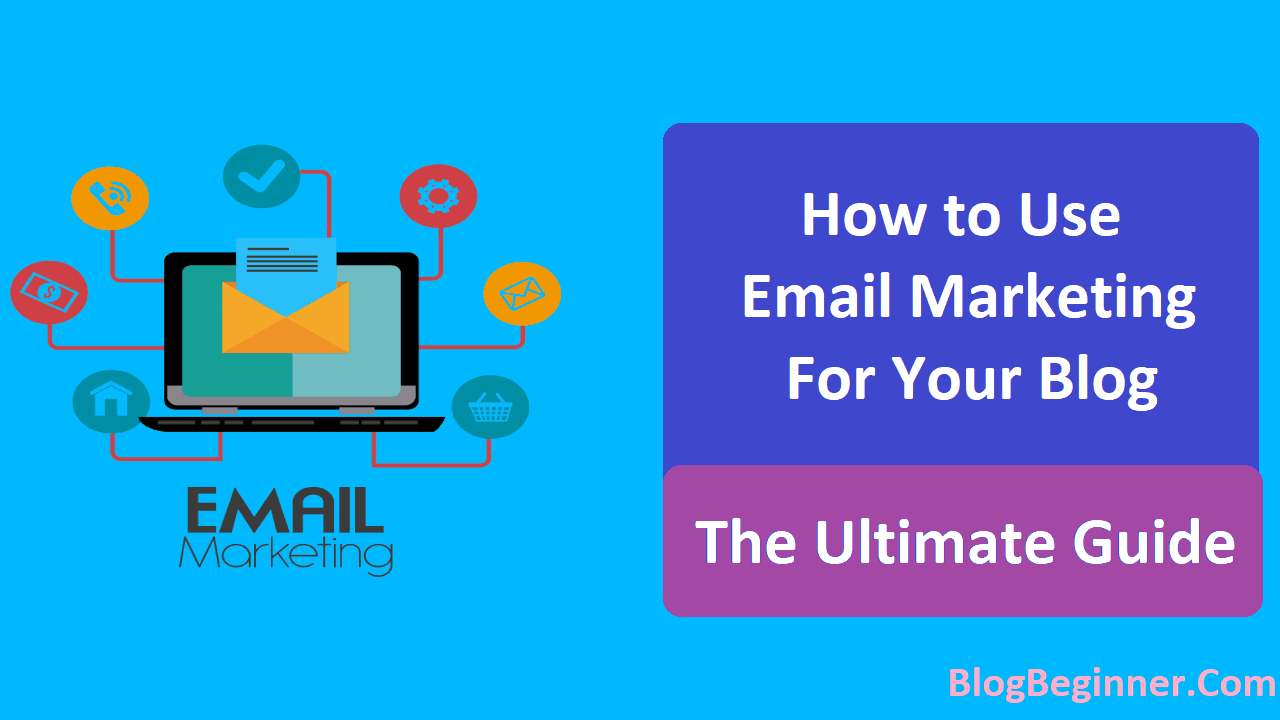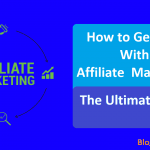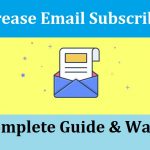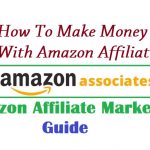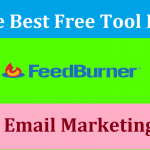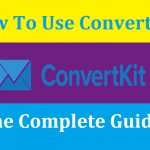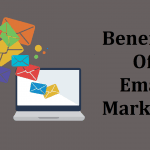Want to transform your simple blog into a big earner? Invest in email marketing.
Email marketing is a reliable direct marketing system that keeps you in touch with your audience in a personalized manner. And it works because most, if not everyone that constitutes your audience has access to email and they check their emails at least once a day. Through email marketing, you let your audience know about your new blog posts and other products or services, as well as offers you have running, through their personal emails.
You also need to acknowledge the fact that the RSS feeds you receive and newsletters you ask your audience to sign up for, or anything else that constitutes sending emails out to a list of readers on your email subscriber list, is part of email marketing. Think of this as a digital marketing strategy whose aim is to transform the subscribers to your blog into consumers.
Contents In Page
Why do we recommend email marketing as a tool for the success of bloggers?
Radicati Group revealed that at least 3.7 million people, worldwide, use email. This translates into 54 percent of the entire world’s population. This means that the use of email gives you an edge by letting you reach a lot more people than you would the use of other digital marketing solutions.
ROI: an email generates an average of $40 for every dollar you spend. There’s also the fact that about two this of the customers who’ve made a direct purchase or learned about (and followed) result from email marketing strategies.
Also, email marketing is superior to social media platforms, including Facebook and Twitter, in customer acquisition as it reports up to 40times higher rates of success than these two leading social media platforms, combined. It also has a higher click-through rate
Perhaps, the other convincing reason why email marketing works is the fact that you get to use your own channel, one that is devoid is the frustrating compliance regulations from external benefits.
So, how do you make use of this marketing strategy?
Build an Email List
Building an email list is simply requesting permission to run email campaigns – you are asking your audience for their personal emails here, so, do it right. Also, your email marketing campaigns require an email list for its to start, run and succeed.
Being the spine of the marketing process, how do you build that list? Where do you get subscribers from? By now, you know that simply asking people to enter their email addresses for updates won’t cut it.
So, first – Identify your audience
Who are you trying to reach through your blog? If you fail in answering this question or resolve to target anyone and everyone potentially interested in your blog, you will fail.
If you have an email subscriber list, go through it to identify their needs, age and location then use the information gathered to build your audience personas. Social media is also a great resource.
With an audience, you’ll have an idea of what your audience could be looking for. Freebies, free newsletters and product (blog post) updates are some of the incentives you could give to entice and get new subscribers. But, it isn’t enough. And this is where you evaluate your call to action. As you know, content is king, but not any kind of content – relevant/ useful content. Your CTA should also have assurances.
Potential subscribers should know what they will get out of subscribing, that you won’t spam them, and frequency of emails. Many other bloggers are doing the same; you need to stand from the crowd. If you have a blog you read or follow faithfully, it means that they promised and delivered – otherwise, you would have unsubscribed.
The best and highly effective incentives for valuable subscribers include free email series, free downloads/ eBooks/ Whitepapers, or Update Lists for new releases and blog post notifications.
Getting Whitelisted
While email service providers work hard to prevent emails from being blocked by ISPs, they don’t have control over whether your emails hit the inbox or spam. To ensure proper delivery of your emails to subscribers, get whitelisted, or rather, being marked as a friend. You can do this by leaving instructions at the top of every email, especially the first thank you or the follow-up email. You could use Campaign Monitor, AWeber, or Mail Chimp.
Manage Your Expectations and Master Remarketing/ Follow-ups
When it comes to email marketing, your expectation will depend on how strong and unique your call to action is, and how consistently, you follow up on your subscribers. Let your subscribers know that you will be sending them one email weekly, then stick to that – go a step further and send the email at the same time/ day, every week. In this case, it is okay to send an email explaining and apologizing for the absence of content as promised.
To get started in the right direction, capitalize on the first follow-up email. Even as an autoresponder sequence, once a person enters their email address, you should acknowledge the receipt and use that as an opportunity to introduce yourself. Be detailed and winded rather than modest and quick. Once they put a name to a brand they signed up for; they will appreciate and notice the other emails you send.
Pitch
Pitching is a critical part of email marketing as it determines whether or not your audience sees the value of your emails. Make your pitch as relevant and useful to that subscriber as possible. To provide value, try giving out newsletters or linking to a blog post. Just make sure you pitch matches your business needs.
Is your newsletter compelling?
A riveting newsletter has a mix of updates and specific messages. So, even though you are selling an email with a list of products or blog posts you want your audience to read, keep it balanced with a personalized message. Use it as a tool for building a strong relationship with your audience.
Use autoresponder
You are human, and you could forget to share details of an offer or new post. This is where the autoresponder sweeps in. All you need to do is to schedule your content ahead of time, consistently. And since you’ve already build a relationship with your subscriber, they won’t be annoyed by frequent updates.
Analytics
This is the most critical part of email marketing. It lets you track you unsubscribes, the click-through rate (CTR), and the open rates.
Open rates portray your success or failure in building positive relationships with your audience. If low, people delete your emails upon receipt, and you have to work on providing value to your readers. A low CTR means poor targeting or weak headlines, and if your subscribers are leaving immediately after getting the email, rework your campaign strategy.
In short, analytics tell you how your email marketing strategy is performing and guides you to success.
Audience Segmentation
As mentioned above, the main cause of a low CTR is poor targeting. What this means is that your audience segmentation strategy – the practice of splitting up the email list into a targeted group is not as it should be.
For the segmentation of a larger and a unified list, split the email list into customer list, product updates, newsletters, HTML, and the daily email list. Doing this makes it possible to send targeted communications.
Email Service Providers
Choosing the right email service provider is critical for the success of your email marketing strategy. Top ESPs include Mailerlite, ActiveCampaign, ConvertKit, and Drip.
Lastly, it is worth mentioning that you should always use strong lead magnets in your email marketing campaigns. Also, place the sign-up form/ opt-in in the right place.
To get more subscribers, give your readers something, use a light or pop-up box, encourage sharing, and share great content.
